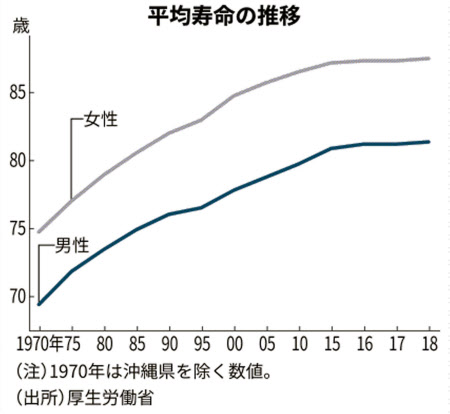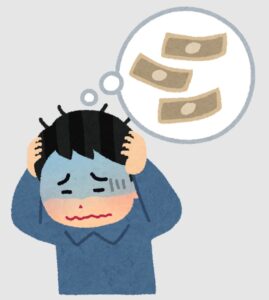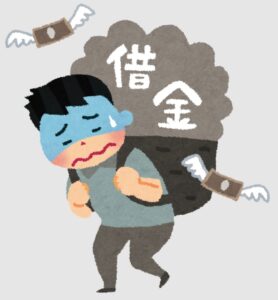管理人オススメコンテンツはこちら
「平均寿命の罠の本質|平均寿命の裏に潜む“じぶん年金”の必要性」
〜前回のつづき〜
●知っておくべき平均寿命と健康寿命の罠(つづき)
(1)平均寿命の罠(つづき)
現実には
平均寿命≒60%生存年齢に
なっているそうで
多くの人がイメージしている
50%生存年齢では
平均年齢+3歳ぐらいになるような
イメージを持ってもらえれば
よろしいかと思います。
こうやって見てみると
私の寿命は85歳ぐらいで見ておくと
妥当な感じになってきます。
ところが
ここから更に考慮すべき点が
有るんですね。

平均寿命は伸び続けている
という現実です。
若干伸び率は鈍ってきてるんですけど
それでも伸び続けてきてるんですね。
・予防医療の進歩
・医学の進歩
・長生きのための生活習慣の研究
・食生活や運動習慣の改善
これらによって
平均寿命は伸び続けている。
今後は伸びる事はあれど
縮む事はなかなか考えにくいのではないか
という状況ですね。
これまでと同じペースで
平均寿命が伸び続けた場合
50%生存年齢がどうなるかを
算定した人がいるんですね。
そのデータを紹介します。
男性のケースですけど
・1970年生まれ→91.6歳
・1980年生まれ→93.8歳
・1990年生まれ→96歳

(出典:Amazon)
いらない保険 永田宏著
という本ですけど
すごくいい本ですね。
衝撃的な数字。
つまり1990年生まれの人は
2人に1人が96歳まで生きるという
データが出てきてるんですよね。
「思ったよりも長生きするなぁ」
と思いませんか?
今までの話をまとめると
こうなるんですね。
ざっくり私の場合は
男性平均寿命の81歳ぐらいまで
生きるのかと想定してたんですけど
平均寿命というのは
現在ゼロ歳の人の平均余命なので
自分の年齢50代半ばの
平均余命を見直してみたら
私の場合は寿命は82歳だった。
50%生存年齢で見てみると
85歳だった。
寿命の伸び率を考慮すると
50%生存年齢は95歳だった。
ドンドン伸びてるという事で
イメージしてたのと
全然違う訳ですね。
なのでデータでみると
思ってたよりは10年以上
長生きしそうだという事ですね。
つまり80歳プラスαまで
生きるつもりでお金を準備してたら
思ったより長生きしてしまって
実は全然足りなかったなんて事は
普通にありそうですよね?
以前もお話しした通り
高度に分散された
高配当株ポートフォリオで
終身で『じぶん年金』を
用意しておくというスタイルは
時代に合っていそうです。
もちろん
高配当株ポートフォリオだけじゃなくても
いいんですけど
自分で資産を用意して
じぶん年金というものを
用意していくというのが
時代に合っていそうかなと思います。
思ったより長生きする時代に
思ったより早くお金が尽きる
これが
平均寿命の罠の本質です。
だからこそ
じぶんで終身の収入源を設計する時代 に
なってきているのです。
〜〜〜つづく〜〜〜
Special Thanks college president Ryo.
●おまけ
≪≪perplexityちゃんによる文章まとめ≫≫
平均寿命は多くの人が「50%生存年齢」と誤解しているが、実際は約60%生存年齢に近く、平均寿命+3歳程度とみるのが現実的だ。
さらに医療や生活習慣の改善により寿命は今後も延び続けると見込まれている。試算によれば、男性の50%生存年齢は1970年生まれで約92歳、1990年生まれでは96歳に達する。
つまり、自分が想定するより10年以上長く生きる可能性が高い。80歳前後までの資金準備では足りなくなるリスクが現実味を帯びており、「思ったより長生きしてお金が尽きる」という平均寿命の罠には注意が必要だ。
そのため、自ら資産を育て、終身的に収入を得られる「じぶん年金」を設計することが、これからの時代における現実的で持続的な生き方といえる。
- https://ameblo.jp/ichisan-rc/entry-12887789840.html
- https://www.pmas-iicp.jp/media/accounting/a83
- https://www.fukuokabank.co.jp/lifeevent/retirement_simulation/
- https://nenreis.com/average-lifespan/
- https://www.nli-research.co.jp/report/detail/id=74630?site=nli
≪≪Chat-GPTくんによる英訳≫≫
~Continuation from the previous section~
【The Hidden Traps of Average Life Expectancy and Healthy Life Expectancy (continued)】
(1) The Trap of Average Life Expectancy (continued)
In reality,
average life expectancy is said to roughly correspond to the age at which 60% of people are still alive.
Most people tend to imagine it as the age at which 50% of people are still alive,
but it might be easier to think of it as about 3 years longer than the average life expectancy you typically see in statistics.
Looking at it this way,
estimating my own lifespan at around 85 years old seems fairly reasonable.
However,
there’s another important factor we need to consider here —
the fact that average life expectancy keeps increasing.
Although the rate of increase has slowed a little,
it’s still on an upward trend.
This is thanks to:
Advances in preventive medicine
Progress in medical science
Research on lifestyle habits that promote longevity
Improvements in diet and exercise habits
Because of these, average life expectancy has continued to rise.
Given the current situation,
it seems much more likely that life expectancy will keep extending
rather than shortening in the future.
There was a study that tried to estimate
what the 50% survival age would be
if life expectancy continued to rise at the same pace as before.
Here are the results — for men:
Born in 1970 → 91.6 years
Born in 1980 → 93.8 years
Born in 1990 → 96 years
(Source: Amazon —
from the book “Irunai Hoken” (Unnecessary Insurance) by Hiroshi Nagata — an excellent read, by the way.)
These are shocking numbers.
In other words, according to this data,
one out of every two men born in 1990 will live to 96 years old.
Makes you think, doesn’t it?
“Wow, people are living much longer than I expected.”
Let’s summarize what we’ve discussed so far.
Roughly speaking,
I used to assume I’d live to about 81 years old,
the current average life expectancy for men.
But average life expectancy refers to the average remaining years of life for someone who is zero years old today.
When I checked the average remaining life expectancy for someone in their mid-50s (my age),
it came out to about 82 years.
If I look at the 50% survival age, that becomes 85 years.
And when I take into account the ongoing increase in lifespan,
the 50% survival age becomes around 95 years.
So clearly, the reality is very different from what I had imagined.
The data shows that I’m likely to live more than 10 years longer than I originally expected.
That means if I only prepare my finances assuming I’ll live to around 80-plus,
I might end up living much longer —
and find that my money runs out well before I do.
That’s a very realistic scenario.
That’s the point here.
As I’ve mentioned before,
a well-diversified high-dividend stock portfolio
that generates income for life —
a kind of “personal pension” —
seems very well-suited to the times we live in.
Of course,
it doesn’t necessarily have to be only high-dividend stocks.
The key is to build your own assets
and create your own lifelong income source — your personal pension.
That seems to be the direction our era is heading in.
We now live in an age where people live longer than they expect,
but their money runs out sooner than they expect.
That — is the true essence of the trap of average life expectancy.
And that is exactly why
we are entering an era where each of us must design our own lifelong income stream.
Special Thanks OpenAI and Perplexity AI, Inc








-300x300.jpg)